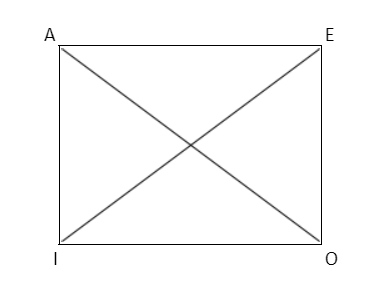For inquiries, visit us:
Facebook Page: Belle’s Residences – Panglao Vacation Homes
Website: Belle’s Residences – Panglao
BOOK NOW VIA AIRBNB
These notes discuss in detail the nature and dynamics of the traditional square of opposition in categorical logic.
Two categorical propositions stated in standard form having the same subject and predicate terms may differ in either quantity and quality or both. The term “opposition” is used by logicians to illustrate these differences. However, “opposition” should not be understood as “disagreement” in ordinary language. For example, given two propositions having the same quality but different in quantity, such as “All students are intelligent” and “Some students are intelligent”, the ideas they express do not disagree; they are only opposed.
The relationship of opposing propositions can be schematically presented by placing them on different angles of a square. Please see the illustration below.
Contradictories
Contradictories are the relationship between statements opposing both quality and quantity, that is,
- Universal affirmative (A) and particular negative (O) propositions (A-O), and
- Universal negative (E) and particular affirmative (I) propositions (E-I).
Their relationship indicates that one member of each pair is denying the counterpart member of the other, and vice versa. So, whatever, the truth value of one proposition, the truth value of the other is automatically its opposite. Hence, contradictories cannot be both true or false at the same time.
Contraries
The relationship between universal affirmative (A) and universal negative (E) propositions are called contraries. They cannot be both true though both can be false at the same time. Thus, to know that one is true, the truth value of its contrary must be false. But to know that either one is false, it does not always follow that its counterpart is also false though that is a possibility; but the other possibility is that it could be true. It means, therefore, that the truth value of its contrary is undetermined.
Subcontraries
Subcontrary is the relationship between two particular propositions opposing in quality. Thus, this is a relationship between particular affirmative (I) and particular negative (O) propositions. Subcontraries cannot be both false though both can be true at the same time. Know that either one is false allows us to infer its subcontrary as true. But knowing that either one as true does not automatically suggest the falsity of its subcontrary, though again that is a possibility. This means that it is undetermined.
Subalternation
The relationship between propositions sharing in quality but not in quantity is called subalternation. Thus, subalternation is a relation between
- Universal affirmative (A) and particular affirmative (I) propositions, and
- Universal negative (E) and particular negative (O) propositions.
Universal propositions are called superaltern, while particular propositions are called subaltern. If the superaltern is true, its subaltern is true; but if the superaltern is false, the subaltern is undetermined. On the other hand, if the subaltern is false, the superaltern is false; but if the subaltern is true, the superaltern is undetermined.
Exercises
Instruction: Using the truth value of the given referent, determine the truth value of the other statement.
- If A is true, what are the truth values of E, I, and O?
- If E is true, what are the truth values of A, I, and O?
- If I is true, what are the truth values of A, E, and O?
- If O is true, what are the truth values of A, E, and I?
- If A is false, what are the truth values of E, I, and O?
- If E is false, what are the truth values of A, I, and O?
- If I is false, what are the truth values of A, E, and O?
- If O is false, what are the truth values of A, E, and I?
Exercises
Instruction: Using the Square of Opposition, determine whether the arguments below are valid or invalid.
- All successful executives are intelligent people. So, it is false that some successful executives are not intelligent.
- Some Sillimanians are Cebuanos. So, it is true that some Sillimanians are not Cebuanos.
3) No metals are conductors. So, it is true that some metal are conductors.
4) It is not the case that some martyrs are not saints. So, it is false that all martyrs are saints.
5) It is false that no wrestlers are weaklings. So, all wrestlers are weaklings.
6) Some priests are not faithful to their vows. So, all priests are faithful to their vows.
7) No priests are faithful to their vows. So, it is false that some priests are not faithful to their vows.
8) Some soldiers are homosexuals. So, it is false that some soldiers are not homosexuals.
9) Some Sillimanians are not activists. So, it is false that no Sillimanians are activists.
10) It is false that all geniuses are abnormal. So, it is false that some geniuses are abnormal.
Note: Please email learnphilosophy@philonotes.com for the answers.



